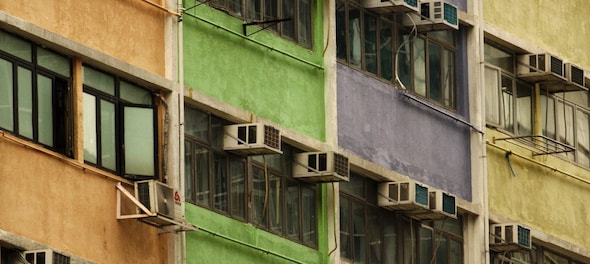
This year, as of June 12, 2019, 32 days have been classified as part of a heatwave, making it the second longest ever recorded in the country. The heat has claimed more than 184 lives in Bihar. The district administration of Gaya in Bihar issued a prohibitory order under Section 144 of CrPC banning all construction activity, public gatherings in open spaces and cultural shows between 11am and 4pm. This is a harbinger of what is likely to happen in tropical regions as climate change leads to rising temperatures.
Not surprisingly, the market for cooling spaces is heating up. According to the Indian Environmental Ministry’s Cooling Action Plan that came out this year, increasing incomes and urbanisation will see increase in the stock of room air-conditioning units from 26.3 million in 2016 to over 1 billion in 2050. This will need three times more electricity compared to the 2016 level. Unless new technologies are rapidly adopted, cooling equipment in the world will, on their own, raise the temperature of the planet by 0.5 degree Celsius by 2100.
National policy on cooling
Addressing this concern, India became the first major country in the world to develop a national policy document on cooling and list out actions to reduce cooling demand and climate impact because of cooling. By 2037-38, the India Cooling Action Plan seeks to reduce cooling demand across sectors by 20-25 percent; reduce refrigerant demand by 25-30 percent; and reduce cooling energy requirements by 25-40 percent. India has recognised ‘cooling and related areas’ as a thrust area of research under the national skills and training programme and aims to certify 100,000 servicing sector technicians by 2022-23.
The transition to efficient cooling presents a compelling business opportunity. Not only do organisations have another way of reducing operational energy requirements but the cooling industry has another chance to innovate and grow. India has shown the ability to “leapfrog” when it comes to technology transitions. The mobile phone and LED revolutions have become legendary. Cooling presents a similar opportunity. India is one of the first countries in the world to introduce five-star rated room air-conditioners and is among the first developing countries to develop the new generation, climate-friendly refrigerant HFO-1234yf for air-conditioners to be used in cars for sale in Europe.
Energy Efficiency Services Limited (EESL), established in 2009 as a joint venture of four national public-sector undertakings, is looking to aggregate demand for super-efficient room ACs, leverage economies of scale and bring the initial cost of the super-efficient air-conditioner close to the units being sold in the market today. This is the same path EESL had taken to trigger the LED revolution.
Search for better technologies
Chillers are among the most intensive energy consuming equipment in large organisations. Therefore it’s not only important to ensure energy efficient and optimal performance, it is also critical to replace older chillers with the latest equipment available in the market today. The investment pays off in less than 2 years’ time. Mahindra and EESL has signed an agreement to install and service a tri-generation project of 803 kW capacity. Tri-generation engines use natural gas as the energy source, generate electricity and simultaneously address heating and cooling requirements. The system more than doubles energy conversion efficiency compared to existing systems.
While there are a number of superior cooling technologies available already, the search for better technologies continues. The Department of Science and Technology and other nodal ministries of the Government of India are supporting the Global Cooling Prize. The prize envisions a ‘5X solution’ – a cooling solution that has one-fifth of the climate impact of the commonly sold room AC units in the market today, taking into account both the electricity consumption and the global warming potential of the refrigerant used.
The Climate Group’s ‘Cooling Challenge’ has come at a most appropriate time. Many organisations around the world, including Godrej and Mahindra from India, have promptly signed up to the challenge as soon as it was announced. Cooling can be the next big thing in energy efficiency. Concerted action to increase cooling efficiency will go a long way in helping countries achieve Paris agreement commitments and will also help organisations move towards doubling energy efficiency. The heat is truly on better cooling!
Anirban Ghosh leads sustainability at the $20.7-billion Mahindra Group.
Read his columns here.
First Published: Oct 22, 2019 6:00 AM IST
Check out our in-depth Market Coverage, Business News & get real-time Stock Market Updates on CNBC-TV18. Also, Watch our channels CNBC-TV18, CNBC Awaaz and CNBC Bajar Live on-the-go!


Lok Sabha elections 2024: Pallavi Dempo, Jyotiraditya Scindia among richest candidates in third phase
May 2, 2024 2:50 PM
Bengali star Dev files nomination, promises to plant trees equal to number of votes he gets
May 2, 2024 2:27 PM

